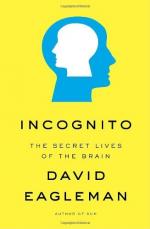
|
| Name: _________________________ | Period: ___________________ |
This test consists of 5 multiple choice questions, 5 short answer questions, and 10 short essay questions.
Multiple Choice Questions
1. How do sorters learn to do their job?
(a) By watching experts sort.
(b) By reading a how-to book.
(c) By an expert sorter correcting a novice.
(d) By studying videos of how to sort.
2. Whose brains must learn to make sense of visual input coming in?
(a) People who move to a different culture.
(b) Blind people who recover their sight.
(c) People who start wearing glasses.
(d) People who have had an eye injured and do not see out of it for a while.
3. What are our brains wired to do as far as complicated tasks are concerned?
(a) To take the task apart and consciously learn it in steps.
(b) Study the task carefully and then consciously decide which part of the brain would be best to perform the task.
(c) Let the unconscious mind perform the task.
(d) To consciously send the task to the unconscious mind to learn and then teach the conscious mind.
4. When an action becomes automatic, what part of the brain is controlling it?
(a) The conscious mind.
(b) It depends upon what the action entails.
(c) The superconscious mind.
(d) The unconscious mind.
5. What would happen if the people actually performed this motion in reality?
(a) The car would go off the road.
(b) The square would be a rectangle.
(c) The circle would most likely turn out to be more elliptical.
(d) The car would flip over.
Short Answer Questions
1. How much of the activity of our brain does the conscious mind represent?
2. How far in the past do we actually "live"?
3. Of what is the phenomenon of depth being stimulated on a flat page an example?
4. How is what a person likes determined?
5. To what are innumerable facets of ourselves linked?
Short Essay Questions
1. How is one's conscious mind limited and how does this make the mind more difficult to understand?
2. How does Mike May adjust to his regained sight?
3. What happens to a blind person who recovers his/her sight?
4. Summarize the experiment Eagleman writes about concerning photographs of women and how men responded.
5. How is our brain wired for performing complicated tasks and why?
6. What does Eagleman say about how vision works?
7. What does Eagleman describe in the opening chapter?
8. Why does Eagleman say it is not correct to change lanes by turning the wheel right and then straightening it out?
9. Who is Mike May and what happens to him?
10. What ways can our vision be fooled?
|
This section contains 956 words (approx. 4 pages at 300 words per page) |

|




